 A stand of charred oak trees on an elevated flat overlooking the Santa Ynez River. The White wildfire was touched off by careless recreationists barbequing at White Rock Day Use Area in May 2013.
A stand of charred oak trees on an elevated flat overlooking the Santa Ynez River. The White wildfire was touched off by careless recreationists barbequing at White Rock Day Use Area in May 2013.
A thick and lumpy Pacific marine layer was flowing up the Santa Ynez River valley and a cool wind buffeted the crests of ridges. The late afternoon low cloud cover added a degree of dark character and attitude to the spring day giving the land a muffled, closed in feel.
I wandered aimlessly around the odoriferous burnt forest. It’s a canyon I’ve hiked through many times, but now I could see the lay of the land like never before, stripped naked and devoid of vegetative cover. Every fold and crease was visible.
I wondered what I might find. I was sure I’d see vintage beer cans long ago tossed aside by littering lushes and buried beneath the now nonexistent leaf mulch. The steel and aluminum variety that required a churchkey to open by punching holes into the can.
Apart from whatever other trinkets I might see, I thought I might perhaps, by the sheer luck of slim chance, stumble across some treasure, something historical from the Spanish colonial or American postcolonial period or perhaps even prehistoric artifacts, like a Chumash arrowhead, a spear point or a bowl. It wouldn’t be the first time, though it’s not a habit of mine to plunder or intentionally partake in such searches. All I found was a rusty horseshoe that now adorns the mid-point of the exterior wall above our garage door.
 I climbed a shaley ridgeline to reach an elevated flat forested by a stand of coast live oaks overlooking the Santa Ynez River. I wandered a curvilinear course through the blackened trees inspecting the regrowth, which consisted in part of numerous wildflowers that are particularly adept at taking advantage of the slower reseeding of other wild weeds, which eventually smother or depress the delicate more attractive floral species.
I climbed a shaley ridgeline to reach an elevated flat forested by a stand of coast live oaks overlooking the Santa Ynez River. I wandered a curvilinear course through the blackened trees inspecting the regrowth, which consisted in part of numerous wildflowers that are particularly adept at taking advantage of the slower reseeding of other wild weeds, which eventually smother or depress the delicate more attractive floral species.
I came to one particular oak that had had its core entirely burned out and stood twisted up into the air from the barren earth like some wicked piece of sculpted black art, as if it had been frozen still in the midst of a death throe as it was burned alive at the stake in some terrible form of sacrifice. It caught my attention enough that I walked over for a closer look.
Weirdo that I am, because, really, how many other people do this sort of thing. I felt compelled to smell its skeleton. I leaned slowly forward into its woody cavity and, with my nostrils inches away, took a sniff.
It was then, with my head inside the charcoal-colored wooden cavity traced with bits of ashy grey, that I noticed it was snapping, and crackling and popping, something like Rice Krispies cereal in a bowl of milk. It sounded like the smoldering coals of a campfire after the flames have died out. I had to touch it just to make sure it wasn’t still burning, though I knew that was silly. That’s how odd, and how similar to smoldering coals, it sounded.

As I walked on, so silent was the place beneath the muffling blanket of maritime fog, I could hear the myriad crackling of an entire blackened forest of oaks cracking in the moist breeze. I stopped and stood looking into the back-lit, black tree skeletons reaching into the grey sky like the gnarled and crooked arthritic fingers of an old man.
The noise did not seem to be the result of scorched, fire-stiffened branches being forcibly bent by the current of air flowing up the valley, as much as it was the moisture in the breath of air blowing against the charcoal in some way playing upon the desiccated carbonaceous wood.
Whatever the phenomenon at work, the faintly lit gloomy and grey late afternoon sky, and the crackling black and bare trees and largely achromatic environment I stood alone within in no way connoted springtime. It felt otherworldly. Like the setting in a mystical realm of some fantastic tale that was about to unfold before me. So far removed did it feel from the bright and cheery, and otherwise ordinary ambiance that that particular patch of land holds on a sunny blue skied day prior to the burn.






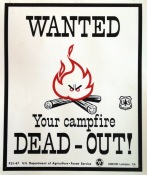

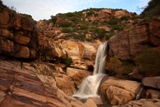
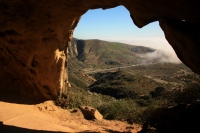

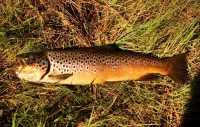
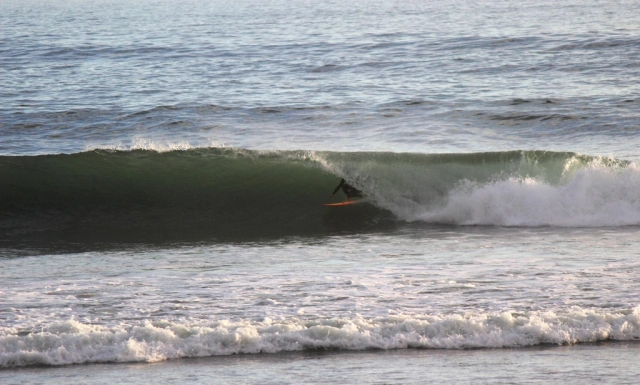
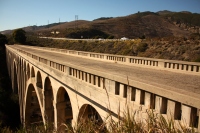
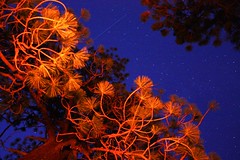








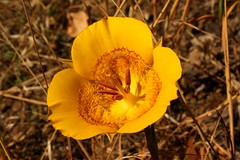









Beautiful. Poetic. I felt like I was there. Thank you
That second photo is a cracker 🙂 (or maybe, that should be a crackler?)
Carol.
Not only are the photos great (the second one is amazing), this was so beautifully written.
This is easily one of the best blog posts I’ve read in quite a while. Really top shelf stuff!
Great job Jack…
Thanks again, Pat. I appreciate hearing how these things play among readers. It can seem sometimes like I’m writing in a private journal with no audience rather than publishing to world.
I enjoyed this post, I always look forward reading jack,s blogs.
Hey David. Thanks for stopping by!
Wow- I’ve been going through so many tantalizing posts, but this one must be the crown jewel. I used to live on Figuroa Mountain and fell in love with exploring the canyons and outback. I also am an appreciator of all things Chumash, especially the rock art. Thanks Jack for all your interesting pictures and for sharing your exploits, they have great value. And Yankee Barbareno, good handle!
I hiked this canyon with my family yesterday and was amazed to see how much new growth is coming from the trees, which appear to be burned through and through. I’m not sure if they can fully regenerate, but they’re trying!